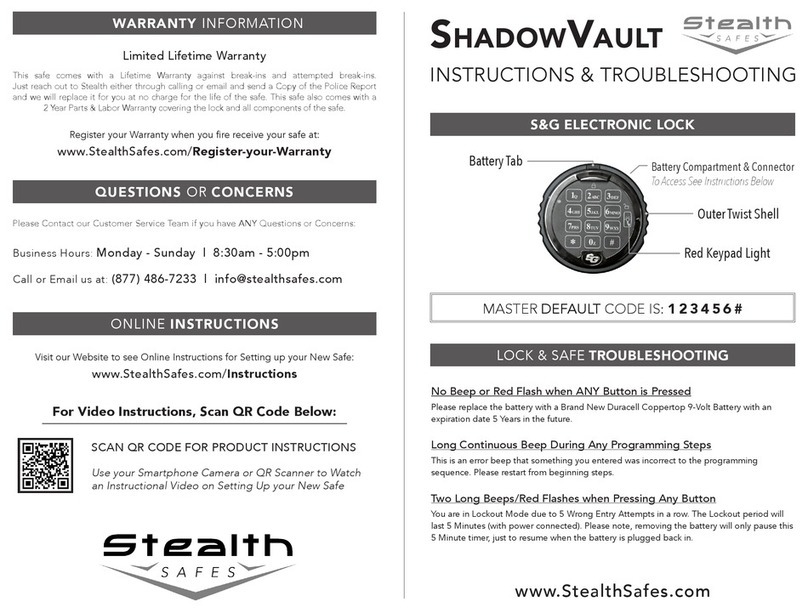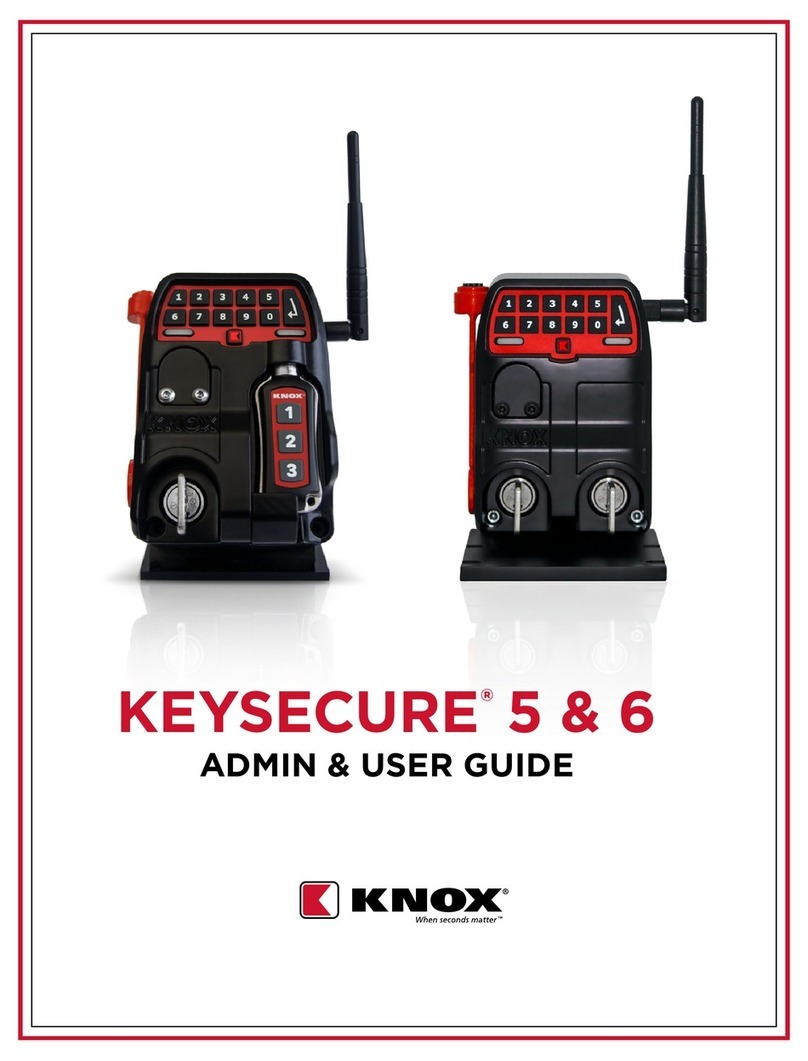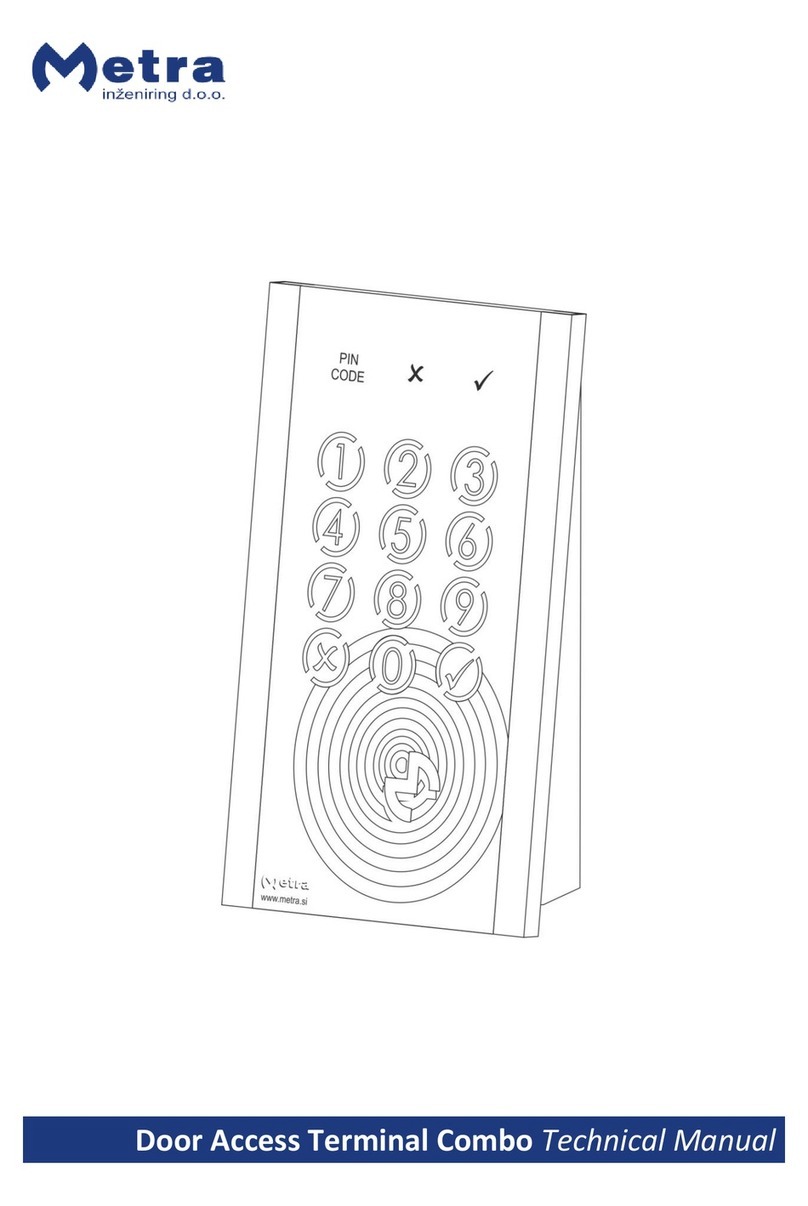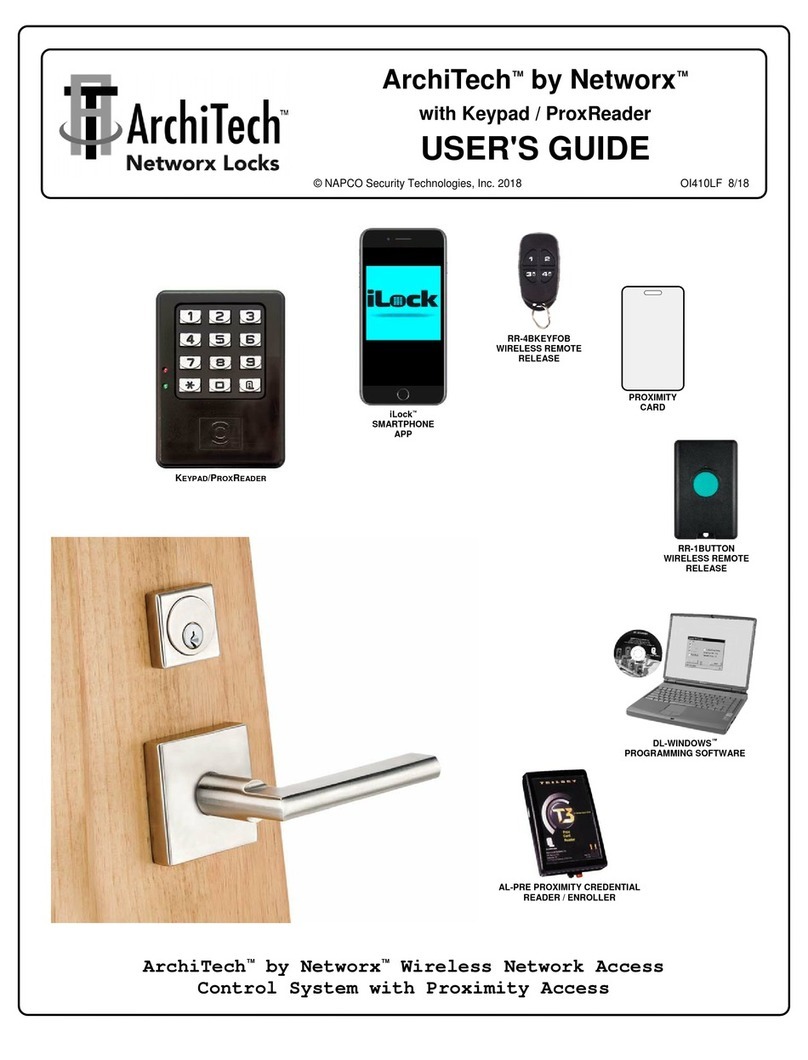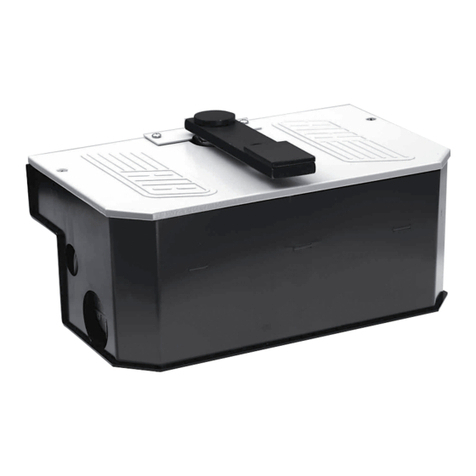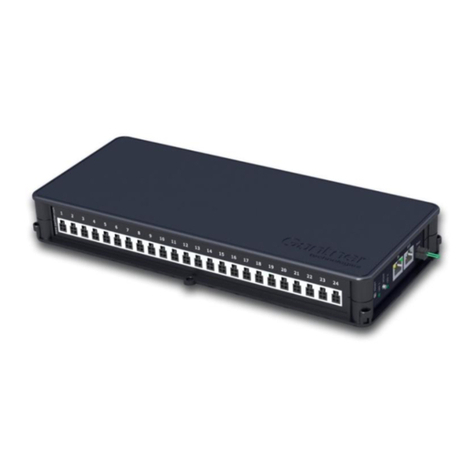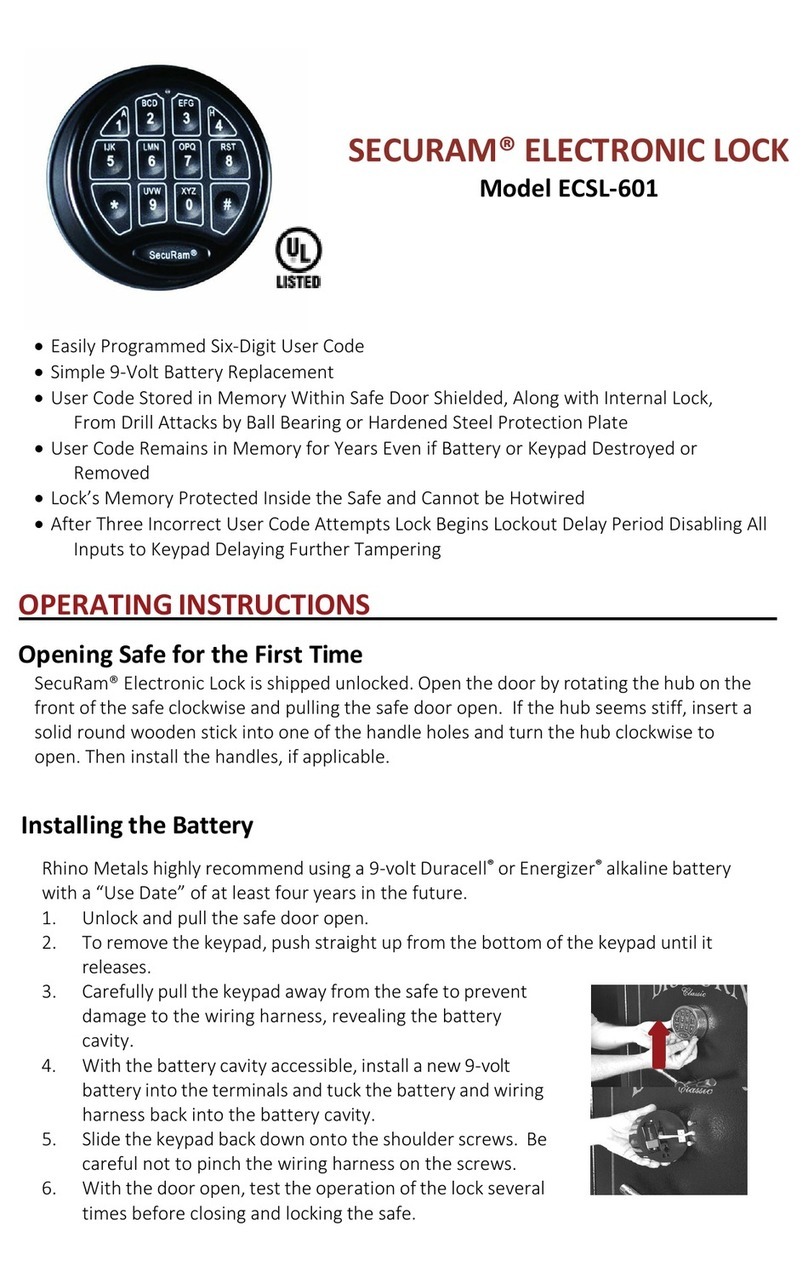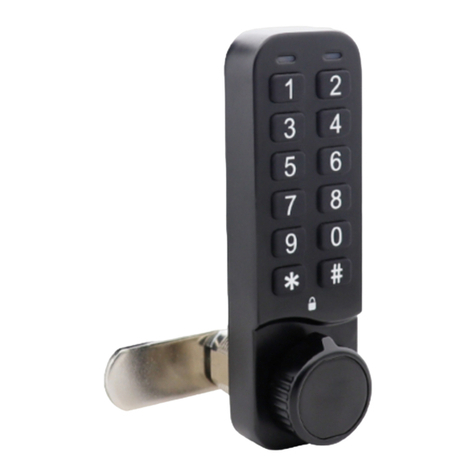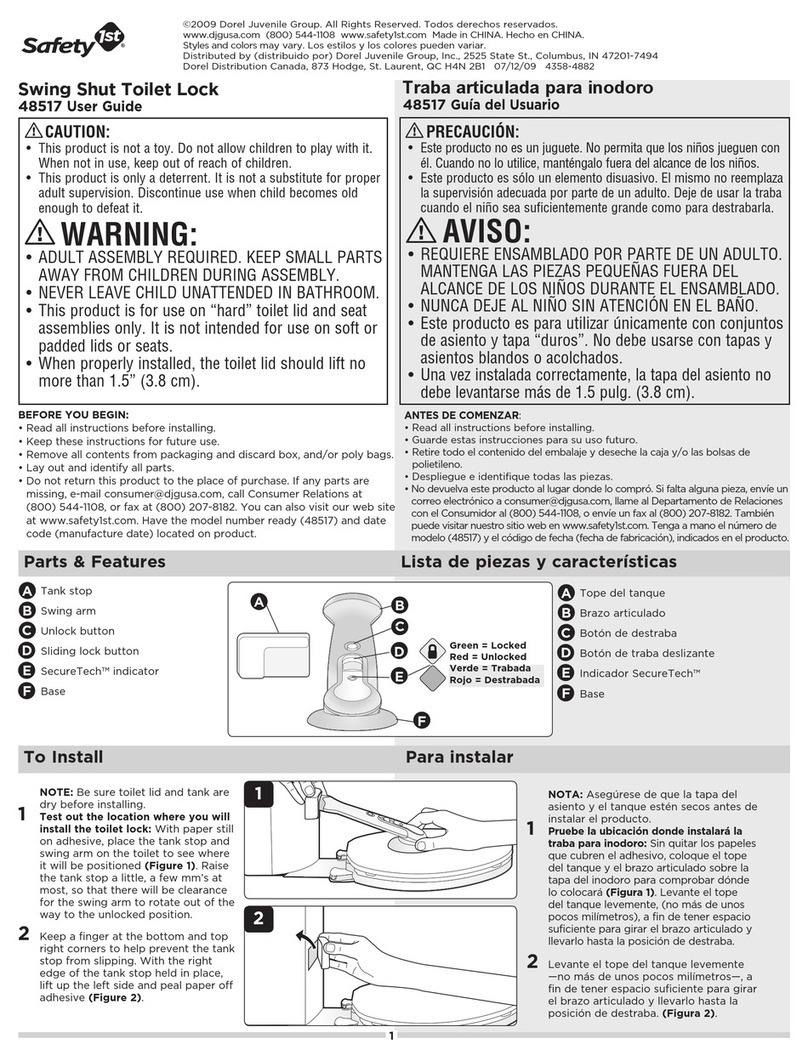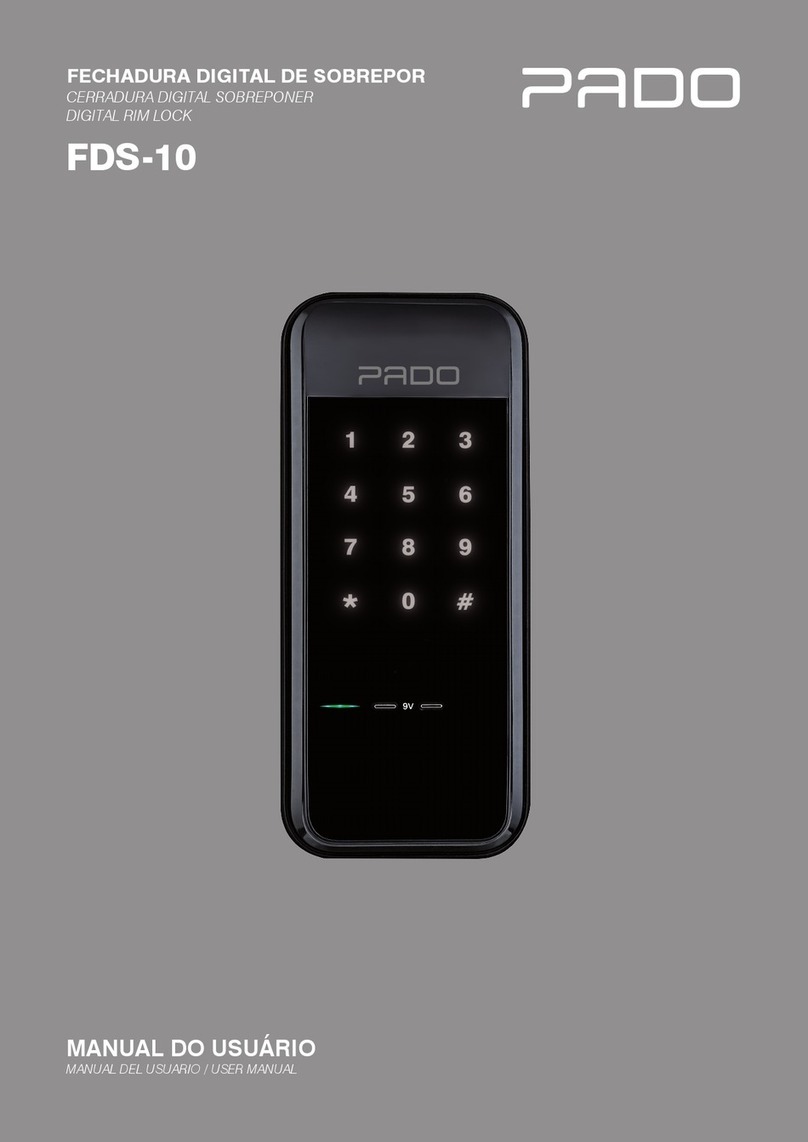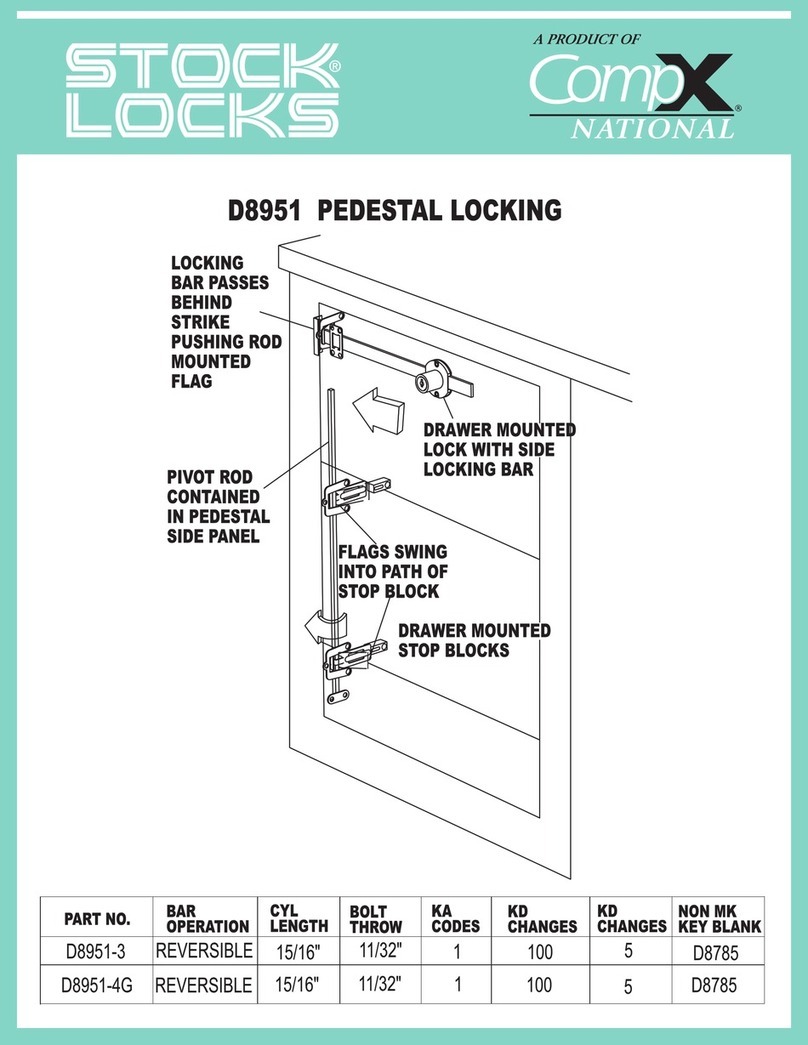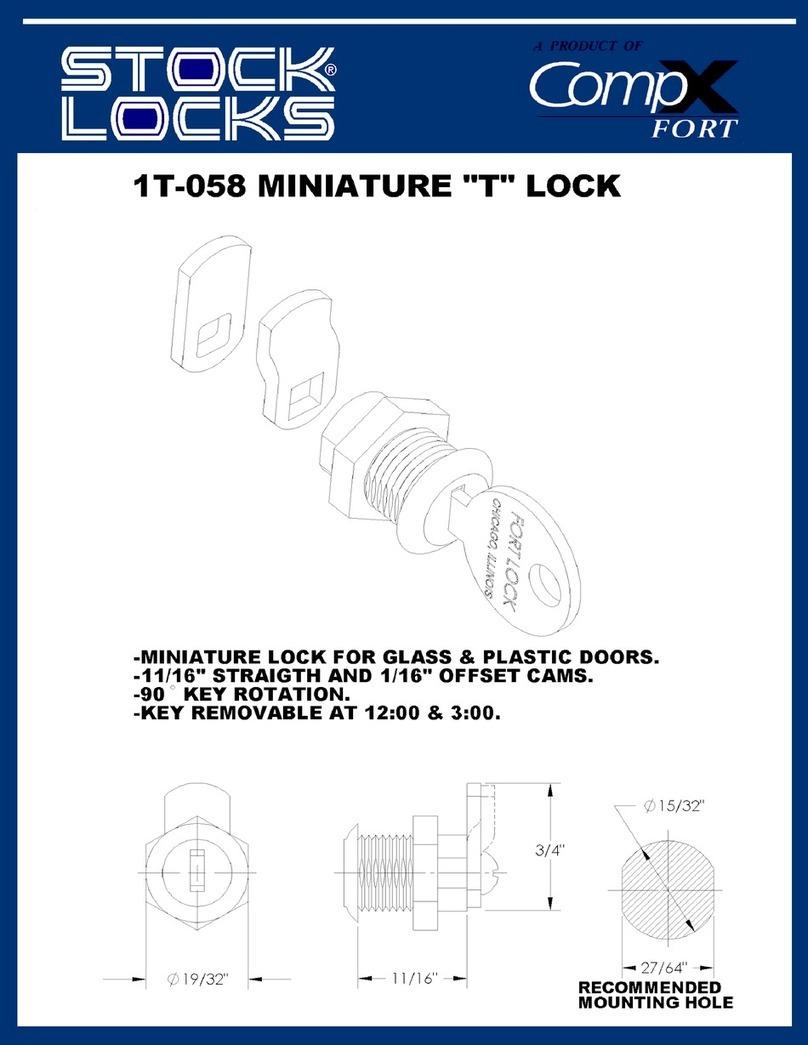
1
ArchiTech Mortise Lock & Surface-Mounted Networx Control Unit Mounting and Installation Instructions
ArchiTech™by Networx™
FOR MORTISE LOCKS USING SURFACE-MOUNTED NETWORX CONTROL UNITS
MOUNTING AND INSTALLATION INSTRUCTIONS
© NAPCO Security Technologies, Inc. 2016 WI2090B 09/16
DESCRIPTION
These instructions detail the hardware installation procedure for the ArchiTech mortise door locks using the Surface-
Mounted Networx Control Units for hollow metal and solid wood doors.
Installation instructions for the Door Contact Sensor, Door Contact Magnet (installed in the door jamb) and the
Oval and Rectangular Proximity Readers are also included.
PARTS OVERVIEW
For reference, the images in Fig. A below display each component (not to scale). In addition to the various screws
included with your mortise lock, please be aware that two types of Proximity Readers are available (either Oval or
Rectangular) but only one type is included with your lock. Furthermore, one of two types of Door Contact
Magnets (installed in door jamb) are included (either 3/8" or 3/4" diameter). We recommend taking the time to
read through these instructions, find and familiarize yourself with each component before you begin your installation.
As detailed in the instructions that follow, the Proximity Reader wires, the Door Contact Sensor wires and the Mortise
Lock Motor Wire are routed through the door and are plugged into the Surface-Mounted Networx Control
Unit. The Mortise Lock Motor Wire can easily be routed within hollow metal doors. For solid wood doors, a
Mortise Drill Jig (part #N95I1DJ) must be used to drill a hole pathway within the solid wood door to route the
Mortise Lock Motor Wire.
REQUIRED TOOLS
In addition to the standard door prep kit tools used to install a mortise lock into a metal or wood door (Phillips and flat
head screwdrivers, etc.), you will need: A small level, and the following drill bit sizes: 5/8", 3/8", 3/4" and 7/64".
IMPORTANT: For installation on UL Listed Wood Fire Doors fill the through hole wire passage with UL Clas-
sified Fire Stop Sealant after connecting all wiring and testing the Lock.
FIG. A: OVERVIEW OF BASIC PARTS (NOT TO SCALE)
OVAL AND RECTANGULAR
PROXIMITY READER COVERS AND
MOUNTING COMPONENTS
MORTISE DRILL JIG
(N95I1DJ)
(SOLID WOOD DOORS ONLY)
DOOR CONTACT
MAGNET
(TWO TYPES)
OR
"SURFACE-MOUNTED" NETWORX
CONTROL UNIT
AND ITS MOUNTING PLATE
DOOR
CONTACT
SENSOR

